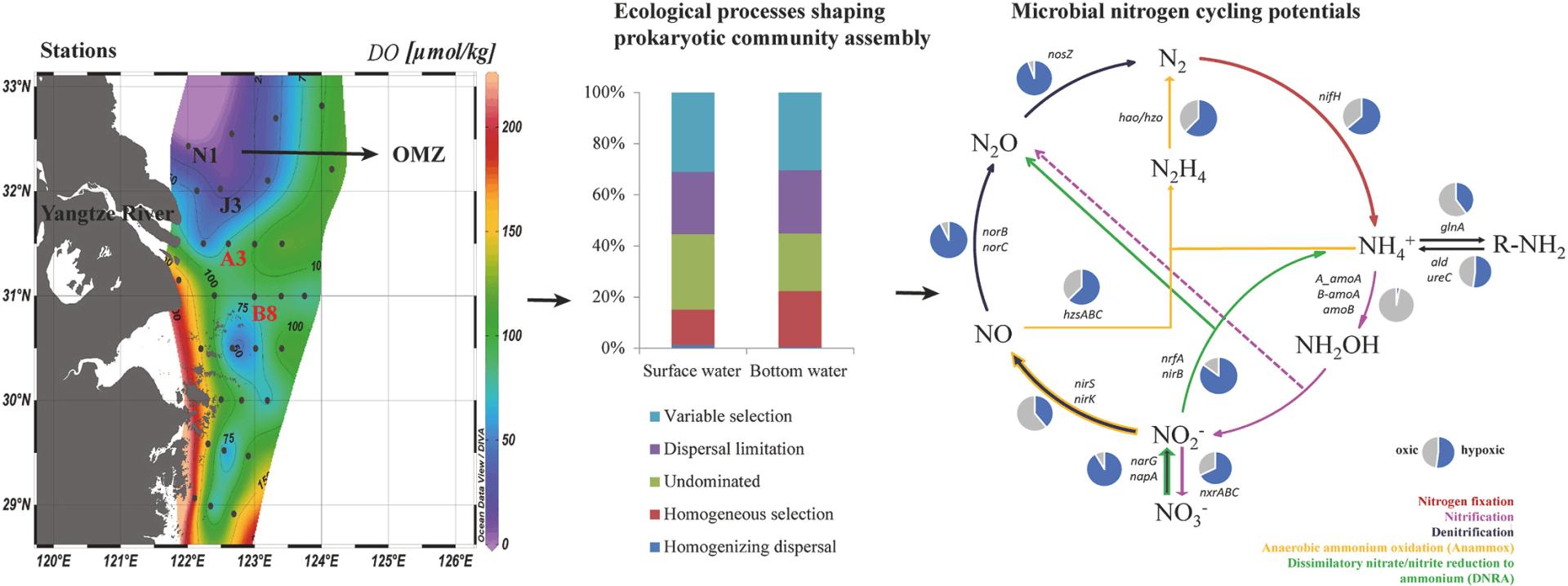Recently, Prof. Meng Li’ group from the Institute for Advanced Study at Shenzhen University published a research article in theEnvironmental Research, making a breakthrough in research on microbial ecology and nitrogen cycling in the Yangtze Estuary water column. This work, for the first time, revealed the community assembly patterns and microbial nitrogen cycling potential in the Yangtze Estuary water column, especially in the OMZ regions. The Prof. Li is the corresponding author, and the first authors is Ph.D. Yihua Sun.
As one of the world's largest alluvial estuaries, the Yangtze Estuary has exhibited a seasonal OMZ since the 1980s. As oceanic OMZs appear to expand because of the global climate change and human activity, it is increasingly important to delineate the complete nitrogen cycling therein to more accurately predict how the nitrogen cycle in the ocean may respond to the changing climatic conditions in the future.
Based on the 16S rRNA gene sequencing, a specific spatial variation in the composition of prokaryotic communities was observed for each water layer in the Yangtze Estuary water column, with the Proteobacteria (46.1%), Bacteroidetes (20.3%), and Cyanobacteria (10.3%) dominant. Stochastic and deterministic processes together shaped the community assembly in the water column. At last, species analysis and marker gene annotation revealed candidate nitrogen cycling performers, and a rich array of nitrogen cycling potential in the bottom water of the Yangtze Estuary. The determined physiochemical parameters and potential for nitrogen respiration by metagenomic analysis suggested that organic nitrogen and NO3−(or NO2−) are the preferred nitrogen sources for microorganisms in the Yangtze Estuary OMZ. These findings are expected to advance research on the ecological responses of estuarine oxygen minimum zones (OMZs) to future global climate perturbations.
This work was supported by National Natural Science Foundation of China (No. 92251306, 32225003, 32393970, 32393971), Guangdong Major Project of Basic and Applied Basic Research (No. 2023B0303000017), China Postdoctoral Science Foundation (No. 2018M640815), the Southern Marine Science and Engineering Guangdong Laboratory (Zhuhai) (No. SML2023SP218), Long Term Observation and Research Plan in the Changjiang Estuary and the Adjacent East China Sea Project (LORCE) (No. 14282), Shenzhen University 2035 Program for Excellent Research (No. 2022B002), and the research fund from Synthetic Biology Research Center of Shenzhen University. Link to the article:https://doi.org/10.1016/j.envres.2024.119011.

Figure 1 Graphic Abstract


